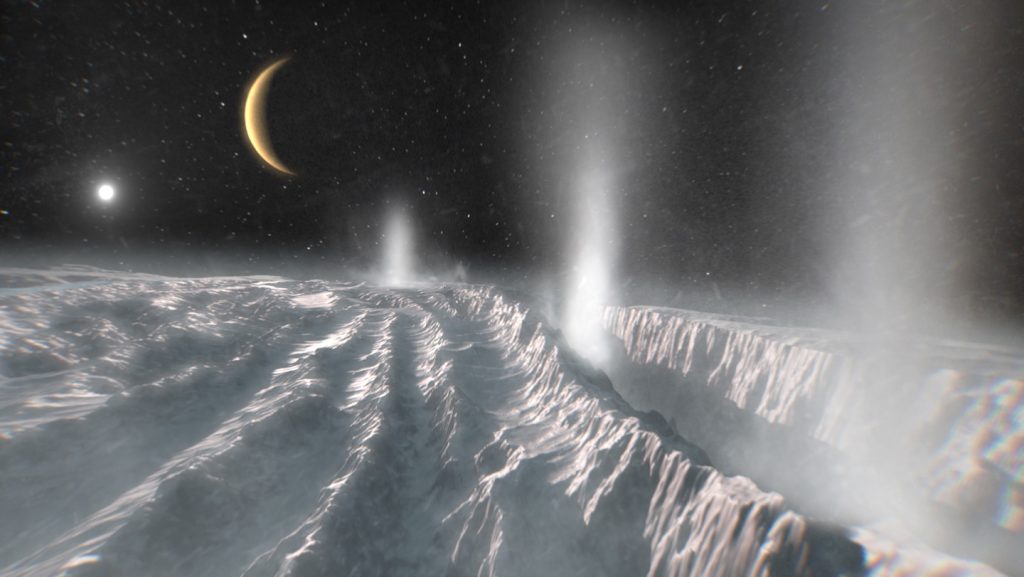Chemical Building Blocks on Saturn’s Moon Suggest Possible Origins of Life
In a fascinating discovery that bridges planetary science and astrobiology, researchers have identified fundamental building blocks of life on Enceladus, one of Saturn’s most intriguing moons. This small, ice-covered world has captivated scientists since the Cassini spacecraft detected plumes of water vapor erupting from cracks in its southern polar region. These geysers have now revealed something even more remarkable: organic compounds that serve as precursors to amino acids and proteins—the very foundation of life as we know it. What makes this finding particularly significant is that these compounds may originate from chemical reactions occurring separately from Enceladus’ subsurface ocean, which scientists already consider potentially habitable.
The detection of these organic molecules fundamentally changes our understanding of where life might emerge in our solar system. For decades, scientists focused primarily on Mars and Earth as candidates for past or present life, but Enceladus has emerged as perhaps an even more promising location. Beneath its icy crust lies a global ocean that appears to contain all the necessary ingredients for life: liquid water, organic compounds, and energy sources from hydrothermal vents likely present on its rocky core. The plumes shooting through cracks in the ice provide scientists with a remarkable opportunity—essentially free samples from this hidden ocean without having to drill through miles of ice. That these building blocks of life appear to be forming through chemical reactions independent of the ocean itself suggests multiple pathways for organic chemistry on this distant moon.
What truly makes this discovery revolutionary is the implication for how life might originate throughout the universe. On Earth, we understand that amino acids and proteins form the basic structural components of all living organisms. Finding their precursors on a small moon nearly a billion miles from Earth suggests that the chemical processes that lead to life may be common throughout the cosmos. Scientists theorize that these compounds on Enceladus might be forming through interactions between water and minerals on the moon’s rocky core, or possibly through energy provided by Saturn’s gravitational forces that heat the moon’s interior. The very fact that these processes are occurring on such a small celestial body, far from the sun’s warmth, dramatically expands our concept of habitable zones.
The practical implications of this discovery extend beyond Enceladus itself. As humanity plans future missions to ocean worlds in our solar system—including Jupiter’s moon Europa and Saturn’s largest moon Titan—understanding the chemical processes on Enceladus provides crucial insight into what we might find elsewhere. If relatively simple chemical reactions can produce life’s building blocks on this distant moon, similar processes might be unfolding on countless other moons and planets throughout our galaxy. This finding reinforces the value of exploring these “ocean worlds” as prime targets in our search for extraterrestrial life. It also highlights the importance of designing future missions with appropriate instruments to detect and analyze organic compounds that might indicate biological processes.
This discovery also raises profound questions about the nature of life itself. If the chemical precursors to life can form independently through various processes, even in the cold depths of our outer solar system, then perhaps life is not the rare accident we once believed it to be. Instead, it may represent a natural outcome of chemistry under the right conditions—conditions that might be far more common than previously thought. Scientists now face the tantalizing possibility that Enceladus might harbor not just the building blocks of life, but perhaps simple life forms that evolved separately from Earth’s biosphere. If true, this would represent a second, independent genesis of life within our own solar system—a discovery that would fundamentally transform our understanding of biology and our place in the cosmos.
As we contemplate the significance of finding life’s building blocks on this distant moon, we’re reminded of how exploration expands not just our knowledge, but our perspective. Just forty years ago, scientists believed life required the warmth of sunlight and conditions similar to Earth’s surface. Today, we know that life on our own planet thrives in environments once thought uninhabitable—from scalding hydrothermal vents to freezing Antarctic lakes. The discovery on Enceladus follows this pattern of expanding possibilities. It reminds us that as we venture further into space, we must remain open to finding life in places and forms we might never have imagined. Whether or not Enceladus ultimately harbors living organisms, identifying these organic compounds transforms this small, distant moon from a scientific curiosity into a beacon of possibility—a place where the chemistry of life unfolds far from the warm cradle of Earth.


